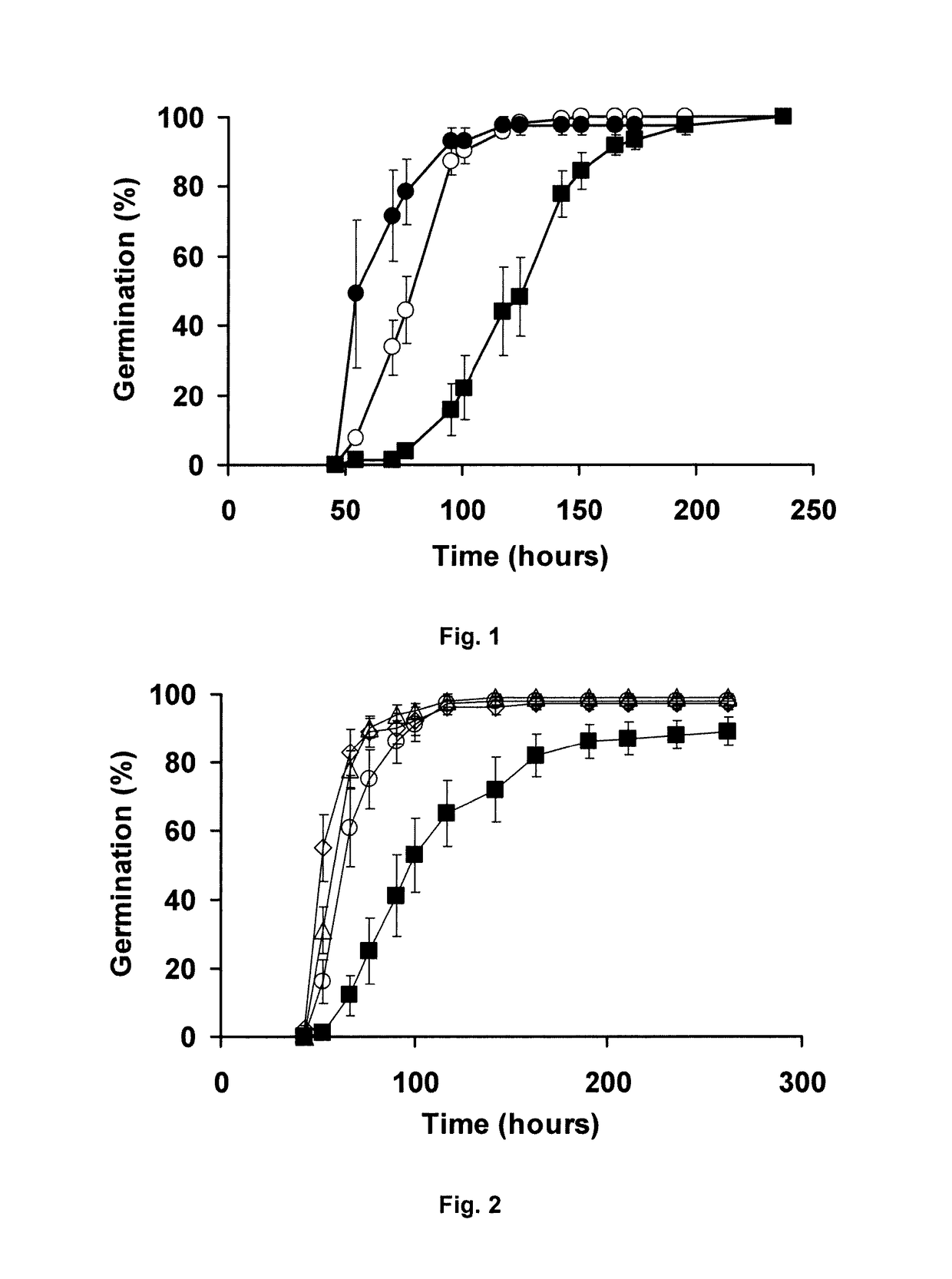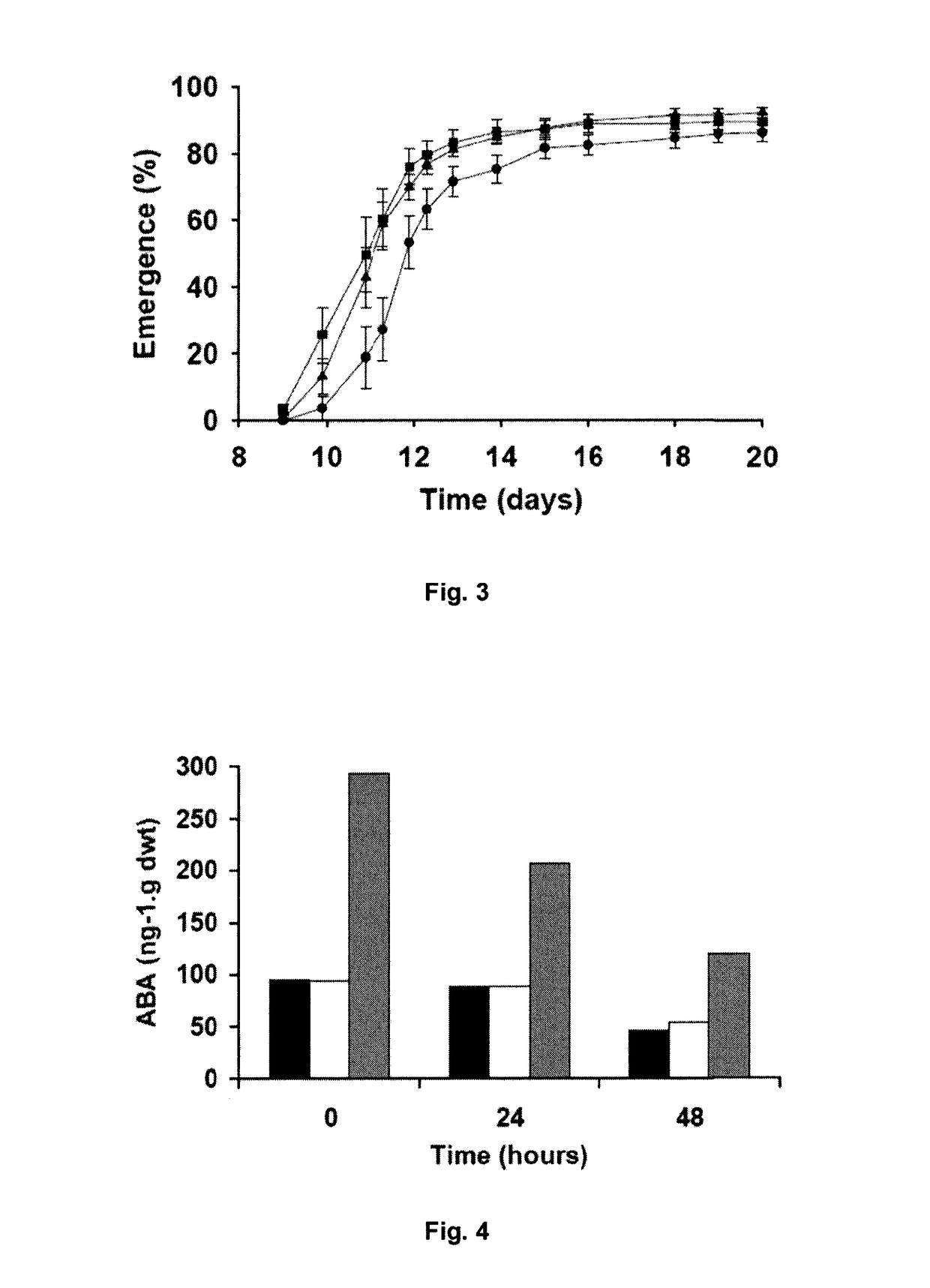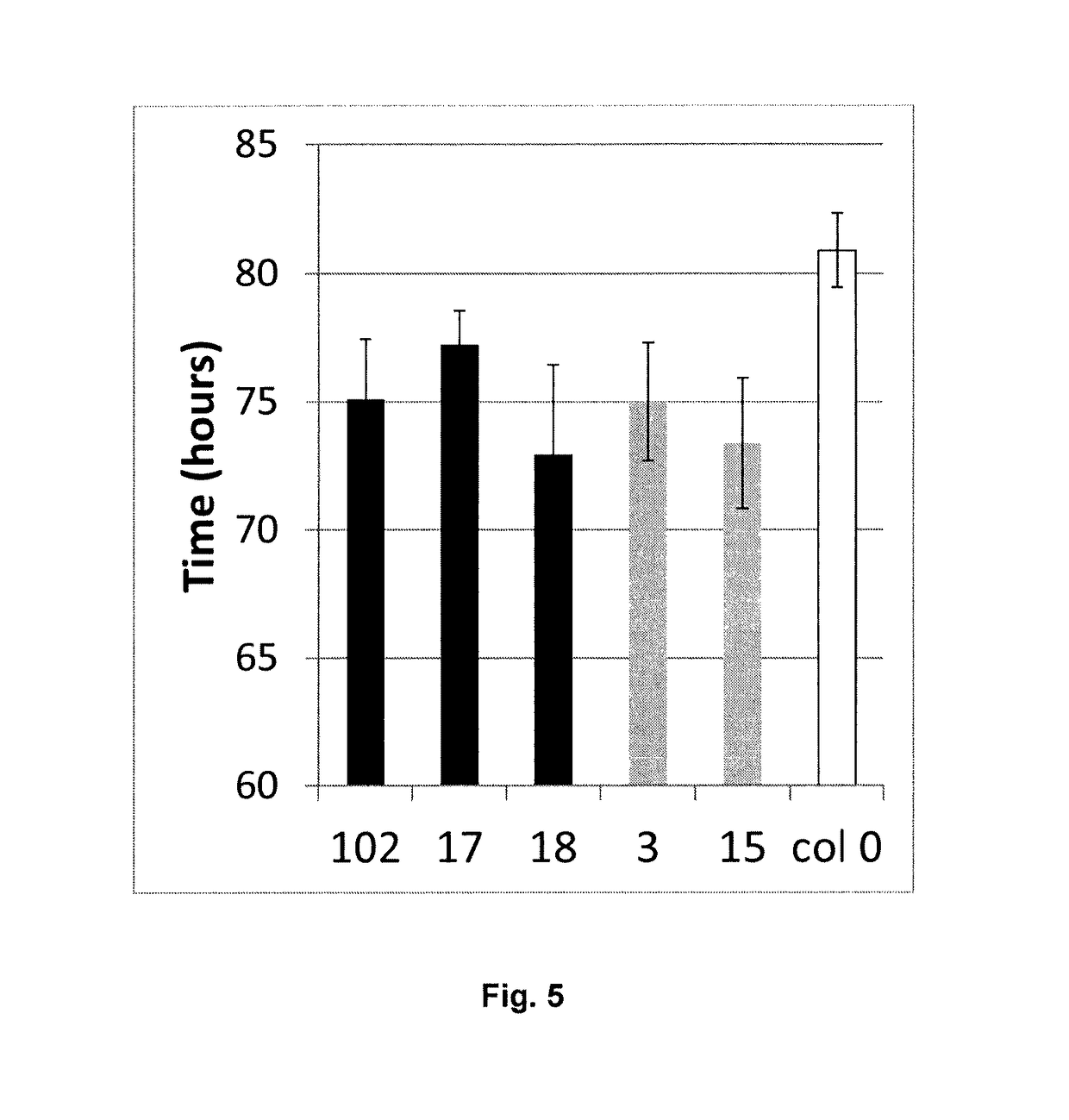Modulation of seed vigor
a technology of seed vigor and vigor, which is applied in the field of polynucleotide, can solve the problems of limited control of these conditions, inability to guarantee the stability and predictability of seed quality of commercial varieties, and inability to guarantee the consistency of seed quality, etc., and achieve the effect of modulating the vigour of seed
- Summary
- Abstract
- Description
- Claims
- Application Information
AI Technical Summary
Benefits of technology
Problems solved by technology
Method used
Image
Examples
example 1
Material and Methods
Seed Production and Comparison of Lines
[0178]Seed samples were obtained from Birmingham University, UK, for a range of Brassica oleracea chromosome substitution lines derived from the doubled haploid parent lines A12DHd (var. alboglabra) and GDDH33 (var. italica; Rae et al., 1999). Bulk seeds were then produced and collected from 10 individual replicate plants of the substitution lines and the GDDH33 parent and 20 plants of the recurrent A12DHd parent as substitution lines are compared to the latter in germination experiments. Plants were laid out in a randomized block with 10 replicates in a glasshouse at 16-18° C. during the 16 h day and at 10-15° C. at night as described by Bettey et al. (2000). Supplementary lighting (400 W high pressure sodium lamps; Osram Ltd, St Helens, UK) was supplied when light intensity fell below 300 w m2 during the 16 h day. Plants were self-pollinated by enclosing the inflorescences in perforated polyethylene bags containing blowfli...
example 2
Experiments Highlighting Additional Phenotypes Linked to Seed Vigour
[0205]These experiments underlines the differences in germination characteristics between seeds with (SL101) or without (A12) the GD33 allele.
[0206]Seeds of the lines A12 and SL101 originated in the UK and were replicated in 2009 in South Africa by a commercial seed producer. Determination of the germination characteristics of the seeds took place in early 2010 in Enkhuizen, Netherlands.
Seed Performance Under Standard Commercial Conditions
[0207]Two replicates of 100 seeds were sown in standard trays filled with soil as in a normal commercial practice. Trays were placed in a germination chamber at 18° C. in the dark for three days. Trays were then transferred to a greenhouse with an average temperature of 20° C. At 10 days after sowing the number of normally developed seedlings and the number of non-emerged seeds were counted.
[0208]Performance of SL101 under these conditions was considerably better than for A12 (tabl...
example 3
Effect of Genotype on Hybrid Seed Performance
[0219]Hybrid seeds were produced under commercial seed production conditions in South Africa by pollinating flowers of two male sterile lines with pollen from 7 other lines.
[0220]Female line 1 contained the GD33 allele, female line 2 contained the A12 allele.
[0221]The sensitivity to low temperature during germination was tested for these seeds. Seeds were incubated on moistened filter paper at 5° C. in white fluorescent light for 10 days. Percent germination was recorded after 10 days and non germinated seeds were transferred to 20° C. in light. After five days the percentage germinated seeds was recorded.
[0222]Seeds produced on the female line containing the GD33 allele showed considerably higher germination at 5° C. and germinated more than 90% after transfer to 20° C. Seeds produced on the female without the GD33 allele showed only low germination percentages and did not recover after transfer to 20° C.
[0223]
TABLE 6Percentage of germin...
PUM
| Property | Measurement | Unit |
|---|---|---|
| temperatures | aaaaa | aaaaa |
| temperatures | aaaaa | aaaaa |
| temperatures | aaaaa | aaaaa |
Abstract
Description
Claims
Application Information
 Login to View More
Login to View More - R&D
- Intellectual Property
- Life Sciences
- Materials
- Tech Scout
- Unparalleled Data Quality
- Higher Quality Content
- 60% Fewer Hallucinations
Browse by: Latest US Patents, China's latest patents, Technical Efficacy Thesaurus, Application Domain, Technology Topic, Popular Technical Reports.
© 2025 PatSnap. All rights reserved.Legal|Privacy policy|Modern Slavery Act Transparency Statement|Sitemap|About US| Contact US: help@patsnap.com



